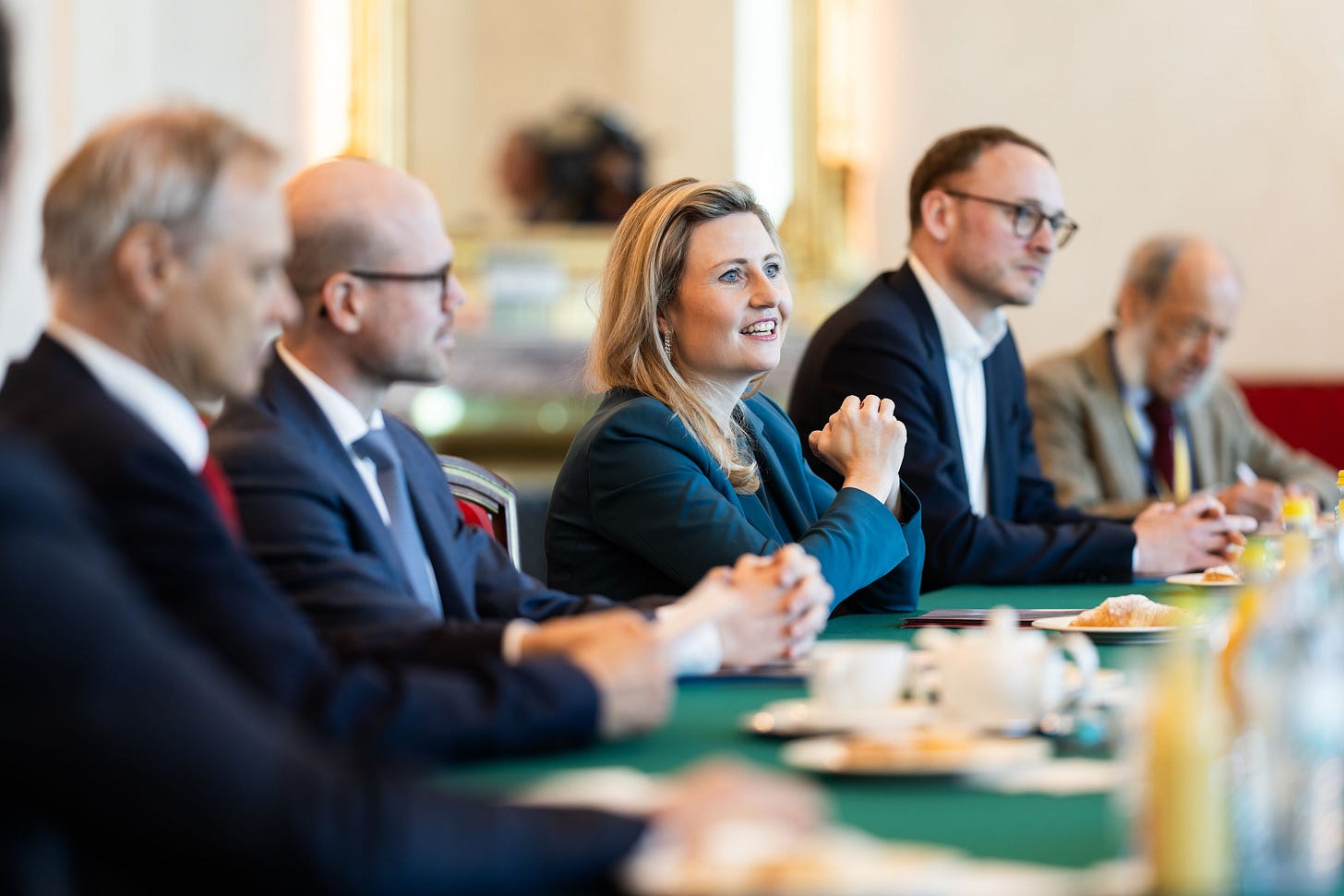Culture Club
The Austrian People's Party wants a “common Austrian culture" anchored “in law as a national cultural asset”

Servus!
Before the Easter break, I wrote to you about a new exhibition running at the at the House of Austrian History called “Holidays in Austria: Reinventing a Tourist Destination.” What the exhibition shows is that, at the same time as it was seeking to build up its tourism industry in the early 1950s during a period of postwar economic reconstruction, Austria was also engaged in a process of nation-building. Austria was selling an image of itself to the world—its landscape, art, culture, cuisine, and tradition—that would also form the bedrock of a new national identity.
Of making many books there is no end, and so too the process of inventing a nation. The conversation that began upon the foundation of the republic after the First World War—What is Austria? Who is Austrian? What does it mean to be Austrian?—continues until the present, often producing more heat than light. Austria, as I’ve previously written, is a young nation-state with a brief and tumultuous history and an emerging concept of what constitutes Austrian national identity or values. The country is younger and more fragile than perhaps it first appears.
Right now, that national conversation is taking the form of a public debate about what constitutes Austria’s Leitkultur, its guiding or common culture. This term first circulated on the German political scene more than 20 years ago and has now found its way to Austria courtesy of the conservative People’s Party (ÖVP). In chancellor Karl Nehammer’s ‘Austria Plan,’ under the heading “Integration Means Acculturation,” the ÖVP states that one of its goals going forward is to create a “guiding Austrian culture,” one which would be anchored “in law as a national cultural asset.”
The purpose of this common culture, the party states, is “to ensure that symbols and forms of behavior deemed contrary to our fundamental values can be treated in a legally differentiated manner,” i.e. can be penalized or made subject to prosecution. Integration minister Susanne Raab went onto explain that this notion of a Leitkultur is about creating “a clear, fundamental consensus on what it means to live together” and isolating those behaviors that depart from that consensus. As examples of the latter, she chose men who ask for male doctors in Austrian hospitals or show disrespect towards female teachers in the country’s schools.
If, as Raab has indicated, this notion of a common culture leads to the agreement of a set of values anchored in Austrian integration policy, then this discussion has the potential to be worthwhile—provided it is handled sensitively and in a non-party political fashion. Democracy, the rule of law, freedom of speech, assembly, and of the press, private property, gender and sexual equality—these values can all be assimilated and offer something for immigrants to integrate into without them having to surrender their identity. A values-based approach to integration suggests the possibility of a more modern and pluralistic nation.
The problem is that the ÖVP cannot agree on what they mean by a guiding culture. While Raab is talking about values, the party apparatus is posting propaganda on social media depicting Austrians in traditional garb erecting a maypole with the caption: “Tradition statt Multikulti,” tradition instead of multiculturalism, words that could have been uttered by the far-right Freedom Party (FPÖ). “Traditions and customs: That’s for the common culture,” another post read. Fluffy electioneering, indeed, but taken seriously, it constitutes a narrow, backward, and exclusionary vision for Austria: a twee, pastoral representation of a country better suited for a tourist brochure than a political manifesto. If this is what the ÖVP intends the debate about a Leitkultur to be, then it is hopeless from the get-go.
Bis bald!
Thank you for subscribing to the Vienna Briefing. Every recommendation helps, so if you know someone who might be interested in reading this newsletter, consider sharing it with them today.
The Vienna Briefing is a reader-supported publication made possible by your donations. If you would like to contribute to my work, think about sending me a tip.
Signa Gets A Reprieve
The British investment firm Attestor has extended a €100 million line of credit to Signa Prime, which should hold off a fire sale of the insolvent property firm's assets. The Thai multinational conglomerate Central Group is interested in buying several of Signa Holding's retail assets including the KaDeWe Group.
Schools Under Strain
Schools in Vienna are being placed under strain, the country having failed to plan for asylum seekers bringing their children to Austria under family reunification rules. Around 350 children are arriving in Vienna every month as part of family reunification, a development that is also testing Vienna’s housing infrastructure.
Volte-Face
The ÖVP-FPÖ government in the state of Upper Austria is testing programs designed to get Syrian asylum seekers into work, having spent years trying to exclude them from the labor market. The government now recognizes refugees can help fill labor shortages in Upper Austrian industries.



